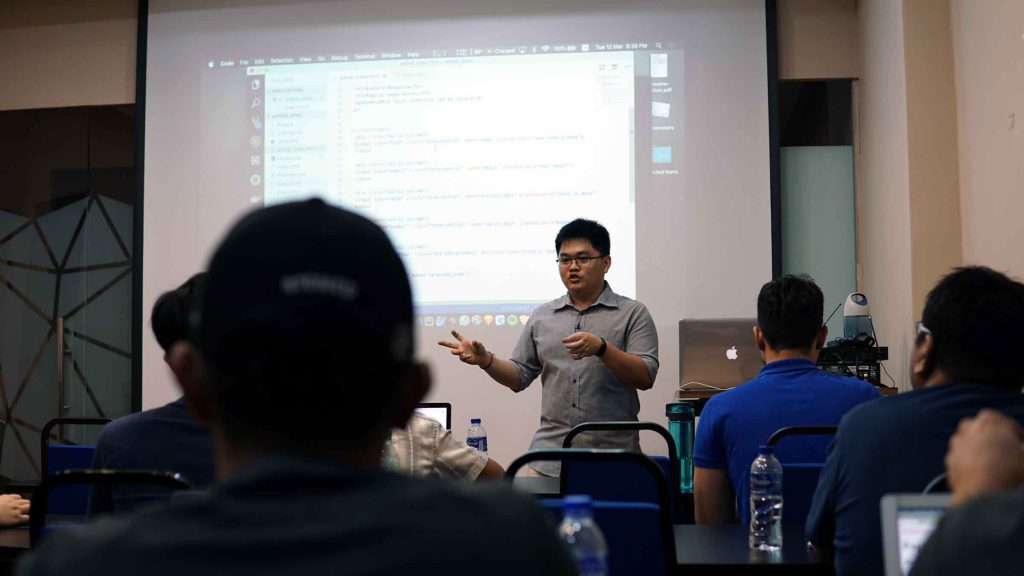Cool offices? .. those with beanbags, sleeping pods and open-floor layout? .. Ermm maybe not.
However, one thing for sure, they’re all using Python programming in some ways or another.
Many people are interested in Python programming, you might be one of them. And many would have this question in mind: are big tech companies actually using Python programming?
Along the years, many programming languages gain popularity and descend subsequently due to many reasons, and the concern that popped in many individuals is whether is it worth the effort to learn Python?
Hence, let’s explore which companies are using this fastest-growing programming language and understand how you can quickly learn the basics of this in-demand skill.
Apart from being known for its simplicity and readability, programmers are given a free-hand to develop programs with different approaches, which includes object-oriented programming, functional programming, or procedural programming.
Python has a simple syntax similar to English language and also syntax that allows developers to write programs with fewer lines than other programming languages.
That said, many tech companies love Python and use it for their real-world applications. Some of them include FAANG companies (Facebook, Netflix Alphabet, Apple), social media giants (Instagram, Pinterest) forums or discussion platforms (Quora), and storage tools (Dropbox).

So maybe you’re looking to break into a tech career, to pursue a dream job at a tech company or to build your own tech startup – learning Python will open you up to an exciting tech journey.
Read about the companies below who use Python programming language, and the opportunities that Python developers get from existing businesses are enormous.
Developers at Google use Python for a variety of system building, code evaluation tools, and system administration tools. Python can also be found in several Google APIs. The usage of Python has been growing especially heavily used for their data analysis, machine learning, artificial intelligence and robotic projects.
Google always considers Python as a vital language for them, which attracted many remarkable Pythonistas to join them. This includes the creator of Python, Guido Van Rossum, worked for Google from 2005 to 2012.
Python has been adapted by Google since their earliest stage as a company, practicing their motto of using “Python where we can, C++ where we must”.
Python is used on countless Google internal systems. Their core search algorithms are written in Python and C++. YouTube uses Python for view video, administer video, control templates, etc. The main site for Google developers is also using Python.
NASA
National Aeronautics and Space Administration or well known as NASA is a U.S. government agency. There is no official release stating what programming languages they use, for what applications, and to what extent it involves.
However, it’s certain they’ve to deploy a diverse programming language for their projects, as an organization with the nature of research and development.
The indication that Python plays an unique role in NASA came from one of NASA’s main shuttle support contractor, United Space Alliance (USA). They developed a Workflow Automation System (WAS) for NASA which is fast, cheap and right.
Internal sources within the critical project added that: “Python allows us to tackle the complexity of programs like the WAS without getting bogged down in the language”.
Moreover, another indication NASA utilizes Python for their projects can be found from their mega 400 open-source projects that they publicly opened.
You can find numerous projects that were written in Python on that page. The projects range from research related to stars, planets, atmosphere, aeronautics, remote sensing and GIS.
Python is not the main language used by Facebook. Python contributes 21% of Facebook infrastructure’s codebase. However, 21 percent in a social media giant means millions of lines of code and thousands of libraries.
Python plays a crucial role in Facebook’s infrastructure management. Multiple services such as network switch setup and imaging, auto-remediation of server hardware faults, scheduling and automating of maintenance work, server imaging and fault detection. In essence, the life cycle of their hardware are controlled by using Python.
Every month, there are about 5,000 commits performed by more than 1,000 engineers. Python’s simplicity enables production engineers to easily interact with other teams by providing reliable interfaces. Thus, the amount of code they have to write and maintain can be minimized and they can give more emphasis on integrating services to their infrastructure
Netflix
Netflix gives freedom to their developers to choose what language to code in. Engineers tend to turn to Python to handle their critical applications.
The prevalent use of Python in Netflix is due to the enriching diversity and third-party libraries which they can use to solve any given problem.
In addition, Python has succinct, clean and expressive syntax with a very huge developer community. These qualities allow Netflix developers to rapidly iterate and innovate.
There have been projects in Netflix which was developed with majorly Python, such as the Central Alert Gateway (CAG), Chaos Gorilla, Security Monkey, Chronos, etc.
Among the most notable project is a system of Regional failover. The system decreases the response time to an outage from 45 to seven minutes with no additional cost. This failover system is powered entirely by Python.
Instagram is the biggest Python user in the world. They built their photo sharing social media platform on top of Django, a web framework which is written in Python. The most interesting part was Instagram succeeded to make a smooth upgrade from Python 2.7 to Python 3. They did it after they had moved from Django 1.3 to Django 1.8 in 2016.
Their remarkable achievement has reached at levels most companies can only dream about. We are talking about 400 million active users per day. Instagram proved that Python is not only great in many ways, but it can also scale massively
This definitely displays the versatility of Python – the ability to get up to speed and launch the product, allowing the engineers’ space to focus on user-facing features. Python is minimalistic and favours pragmatism.
Dropbox
Dropbox must support all major operating system. In the past, developers must rewrite the same code into different programming languages and development tools to meet every platform requirement.
This is where Python came to the rescue. Python’s simplicity, flexibility and elegance allows developers to write the code once and run it everywhere.
Guess what? Where did the creator of Python Guido Van Rossum move when he left Google in 2012? That’s right, it’s Dropbox.
If you want to know what Guido built in Dropbox, it’s documented on this site.
Pinterest is a social media which provides a ‘catalog of ideas’. This platform isn’t just a place to share fascinating images, but a media where its users share their interests.
According to Quora, Pinterest chose Python because of its speed of development and their comprehension with this language.
Pinterest used Python-Dajngo when they were launched, but they moved to Flask since late 2011. The main consideration why Pinterest switched to Flask was their interest to build and expand more APIs.
A skeletal framework like Flask gives a lot of headspace for a developer to customize code. This makes APIs development and deployment ultra fast. Apart from its simplicity, Flask performs really well under loads.
In case you are fascinated to learn Flask, do check out LEAD’s Python 360.
Quora
Choosing a programming language is really important and is exceptionally costly to change. Hence, the Quora founders took a different approach when launching their startup.
According to Bjarne Stroustrup has pointed out that:
There are only two kinds of languages: the ones people complain about and the ones nobody uses.
Whatever language you use there will always be problems you must deal with and users of other languages keep advocating their choice and say bad things about the language of your choice.
The founders of Quora considered several languages including Python, C#, Java and Scala. But finally decided that they stick to Python since other languages have bigger complications for them.
They are already familiar with Python and they would address Python lack of types with unit tests. Just like what Google did, they complement it with C++ to handle performance-critical code.
Conclusion
You can see that the world-leading tech companies love Python. If you want to explore companies who use Python, just head over to any job portals or search engine site and enter ‘Python’. You’ll find that many corporations are willing to pay and hire Python developers.
If you’re ready to commit in learning Python, join the community now and start learning at LEAD’s Python 360 professional certification course.
If you enjoyed reading this, do share with us your thoughts in the comment section below.
If you are interested to learn more about programming, or if you aspire to become a data scientist, LEAD offers a complete Python course in Malaysia that is designed to equip you for a career in Python programming within 8 weeks.
What are
Don’t forget to visit us on Facebook and subscribe to our YouTube channel for more interesting content too.



Hi, are you guys have provide any training on deep learning using keras or tensorflow framework in python?
Looking forward to hear from you
Thank you
Hi Aqilla,
Yes we do, I have dropped you an email. Chat soon!